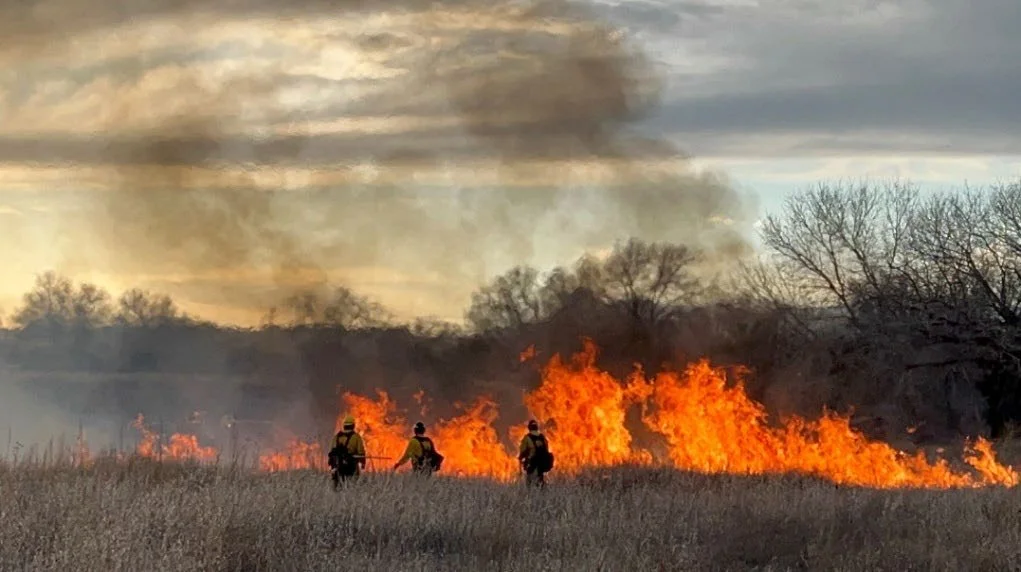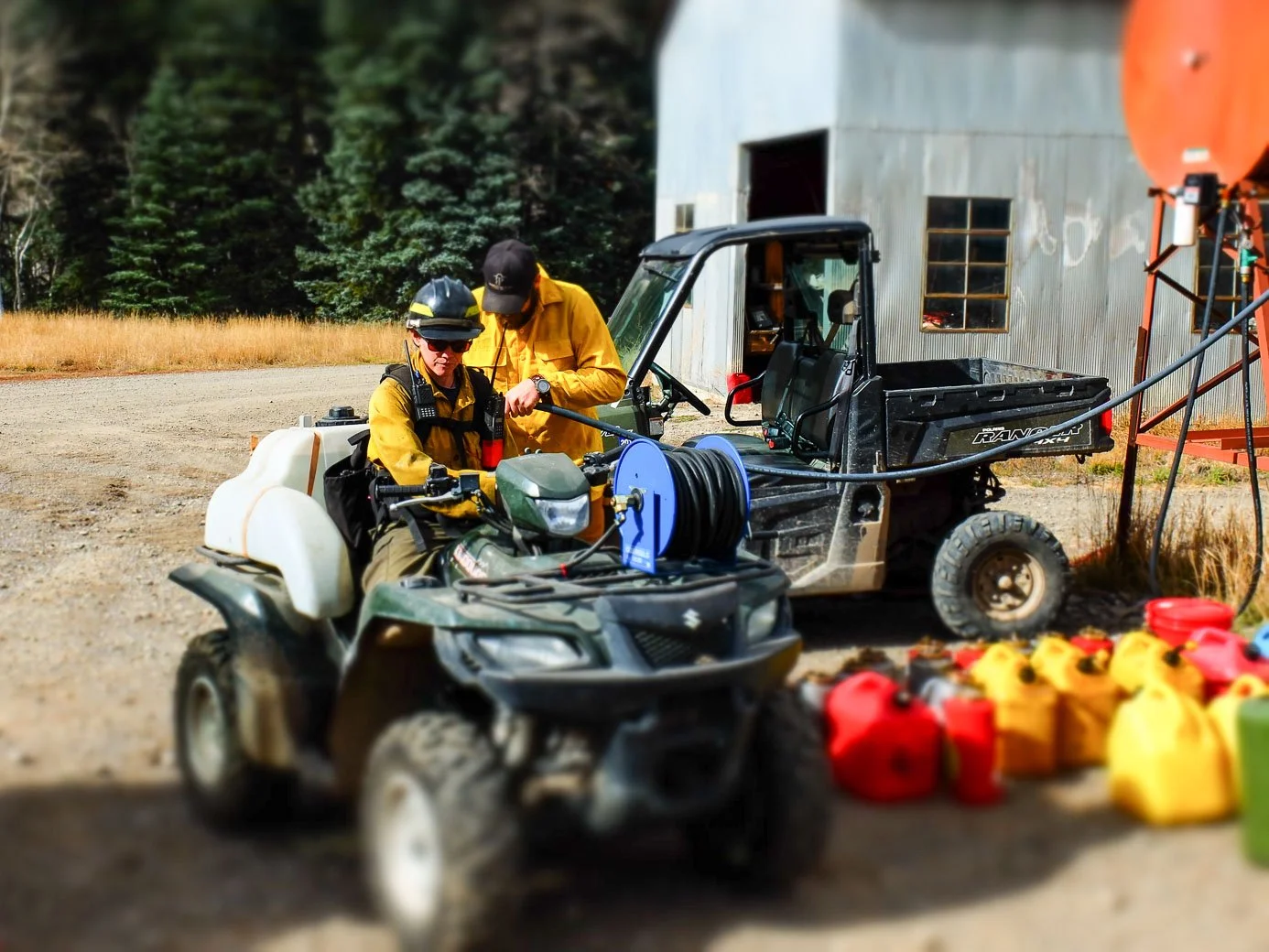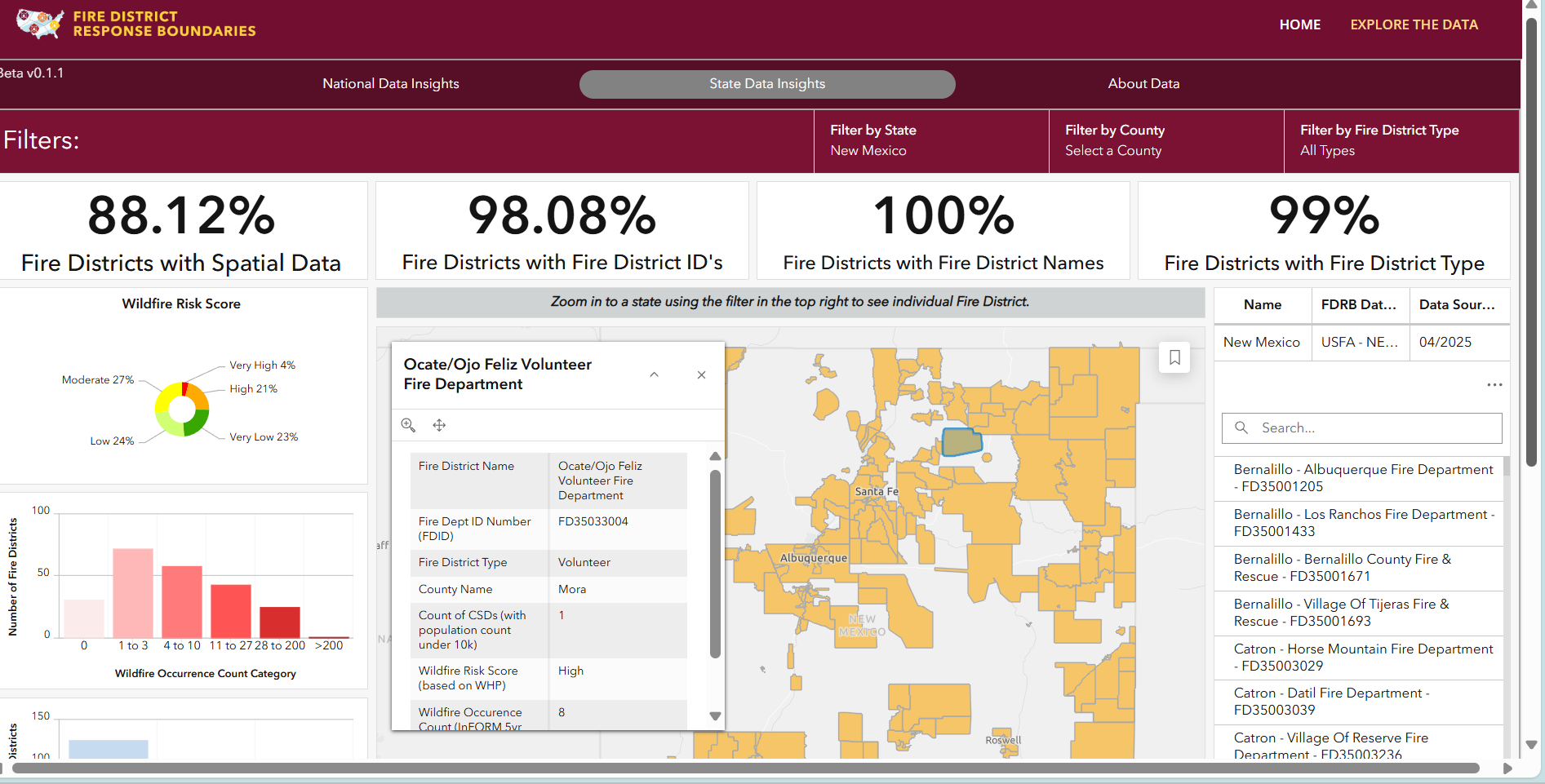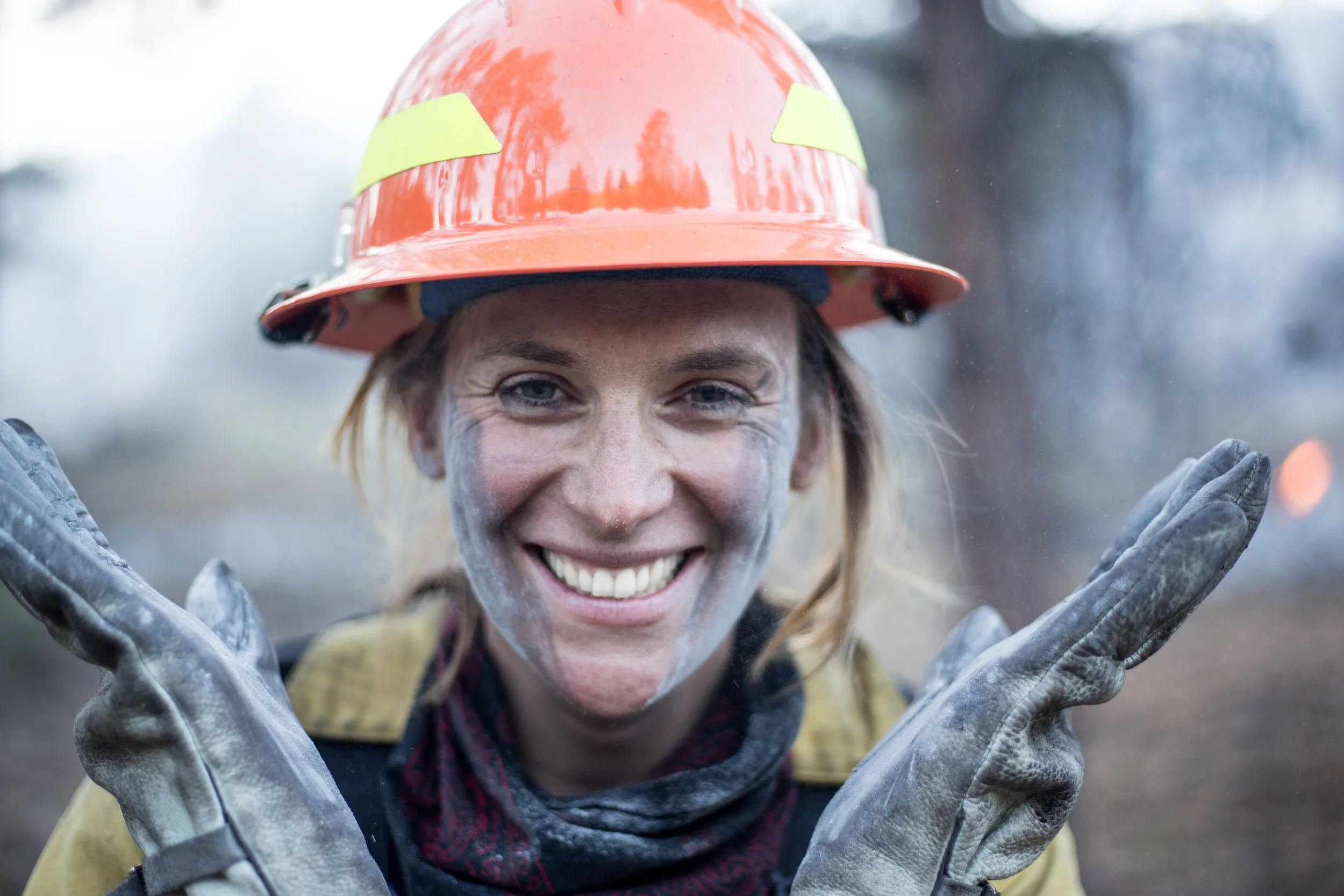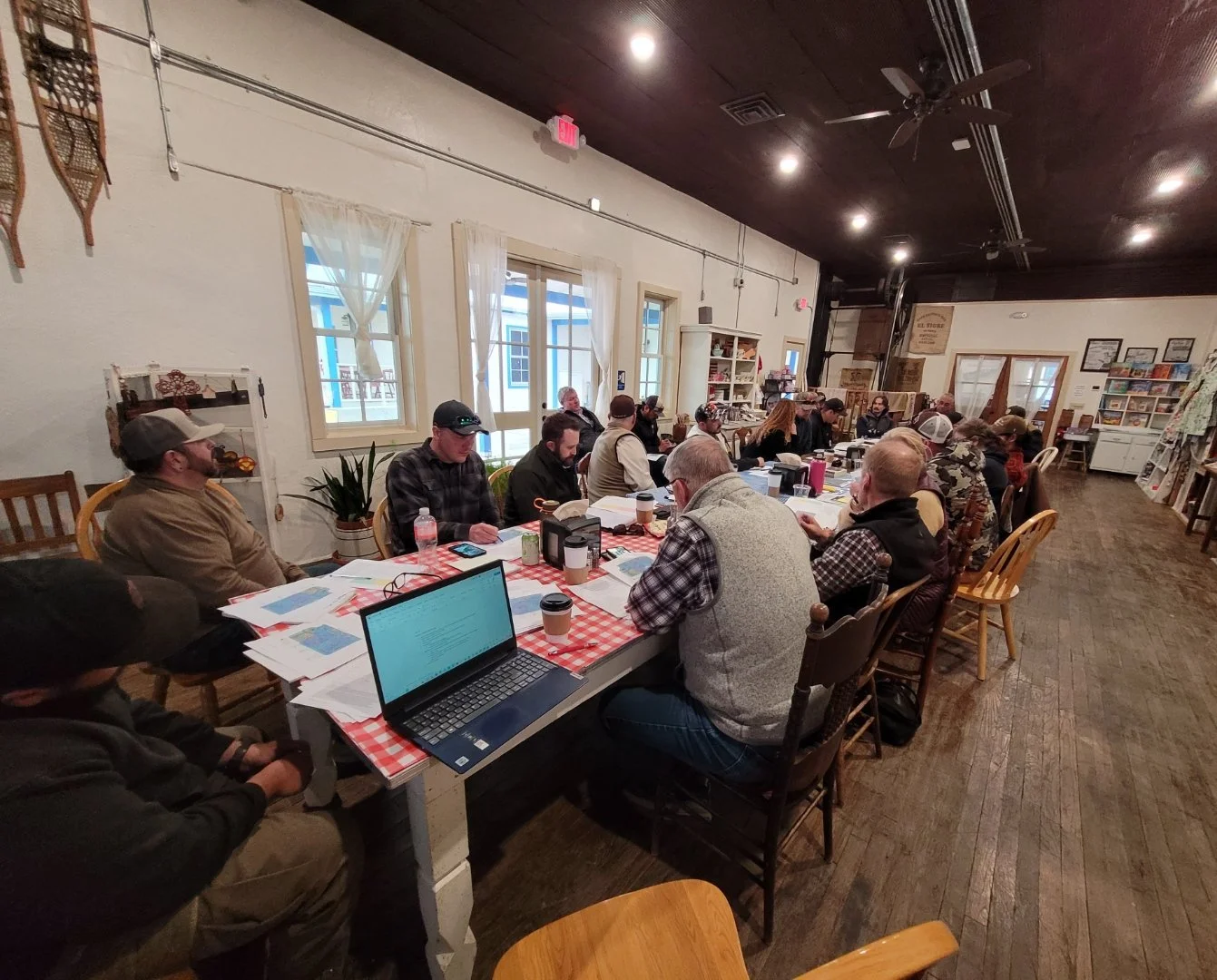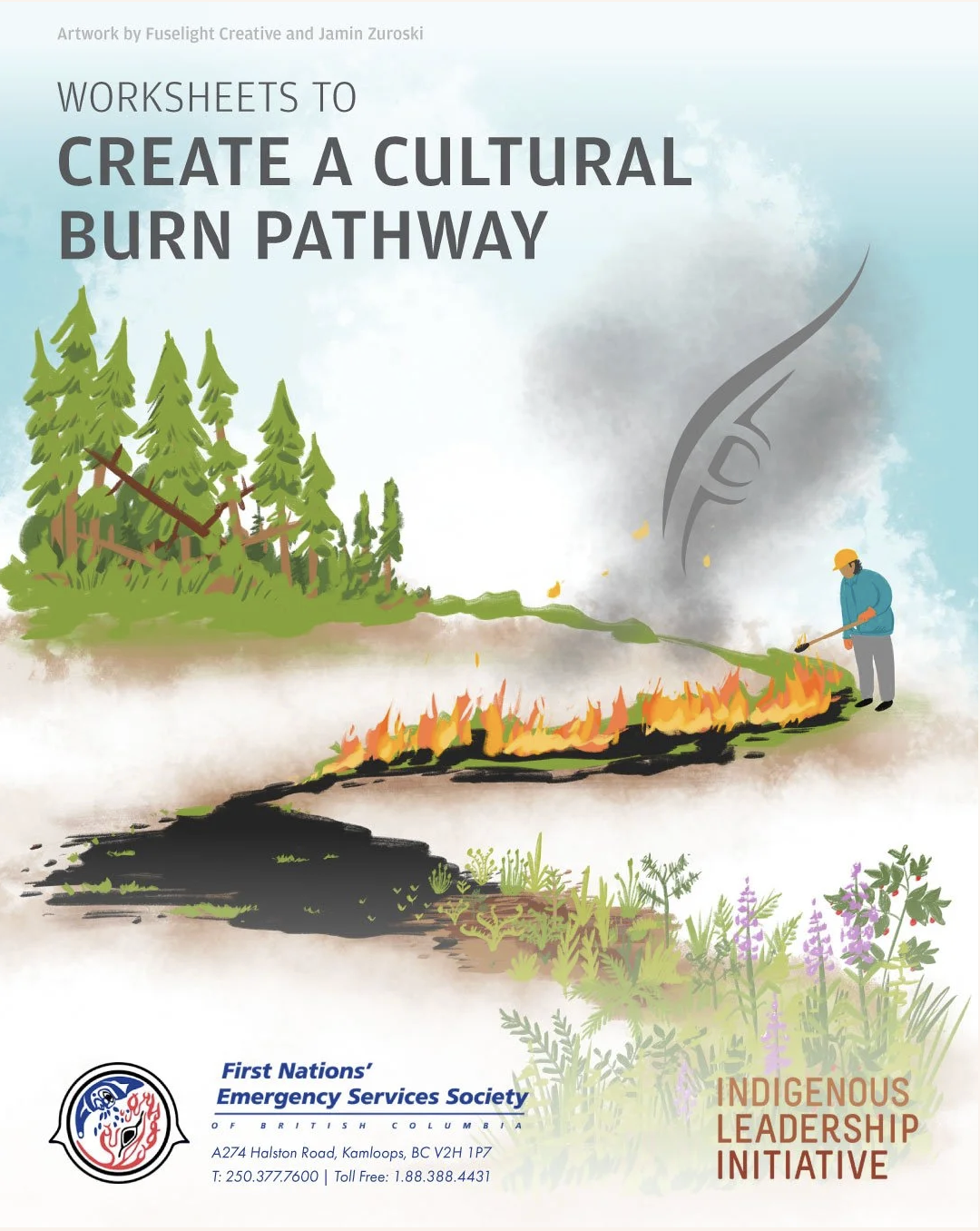Happy Wednesday readers!
Across New Mexico, volunteer fire departments are the backbone of wildfire protection and emergency response. A volunteer firefighter’s work extends far beyond fighting fires; they provide emergency medical care, lead community education and prevention programs, and partner with land management agencies to protect lives and landscapes. In a state that is largely rural, these volunteers make up nearly 78% of the firefighting force. Yet, as State Fire Marshal Randy Varela shared at this year’s New Mexico Wildland Urban Fire Summit, there are only about 4,000 volunteer firefighters serving the entire state, and their average age is 65. This reality highlights a critical challenge: volunteer fire departments urgently need more local support to sustain their ability to keep communities safe.
This week’s blog looks at how community members, no matter their background, can help strengthen their local volunteer fire departments (VFDs) and shares inspiring success stories of local VFDs increasing their capacity. Supporting your local VFD is one of the most powerful ways to promote community safety, resilience, and equitable access to emergency services for everyone.
This Wildfire Wednesday features:
Supporting New Mexico’s Volunteer Fire Departments: A Call to Community Action
Be well,
Megan
Supporting New Mexico’s Volunteer Fire Departments: A Call to Community Action
Why it Matters
Across the country, communities rely on volunteer firefighter and yet, that force is shrinking. According to the U.S. Fire Administration, there were about 676,900 volunteer firefighters in 2020, a sharp decline from 897,750 in 1984, when the NFPA first began tracking this data. This demonstrates the steady decline in volunteer personnel while emergency response calls steadily increase. This volunteer shortage doesn’t just affect who shows up when a fire breaks out, but it also has broader impacts on community safety, insurance rates, and local resilience.
Staffing Impacts Your Community’s Insurance and Safety
The number of volunteers in a local fire department directly influences a community’s Insurance Services Office (ISO) rating. An ISO rating evaluates fire departments and the communities they serve, assigning scores on a scale from 1 to 10, where 1 represents the highest level of fire protection and 10 indicates that the department does not meet minimum standards. These ratings are important because insurance companies often use them to determine fire insurance premiums for homes and businesses.
To effectively respond to a fire, a volunteer fire department must have at least four responders. If a department cannot meet that minimum, its ISO rating could instantly drop to a 10, triggering a ripple effect that raises insurance costs for the entire community. Maintaining a strong volunteer base is therefore essential, not only for public safety, but also for insurance rates for the whole community.
How to Support Your Local VFD
Even if you do not want to participate in direct response, there are still many ways you can support your local VFD.
Volunteer - One of the most impactful ways to support your local firefighters is by volunteering your time and skills so firefighters can focus on protecting lives and property. Volunteer firefighters often require additional assistance in various non-emergency roles including:
Administrative Support: Non-response need’s of VFD’s often include record-keeping, data/report entry, or cleaning/maintaining equipment.
Fundraising: Help organize fundraising events or campaigns to generate funds for necessary equipment, training, and resources. Fundraising initiatives can include community events, donation drives, or partnerships with local businesses.
Community Outreach: Assist with community outreach programs, which can involve educating the community on fire safety, organizing public awareness events, or conducting fire prevention campaigns.
Donate Supplies and Equipment - Fire departments rely on well-maintained gear, equipment, and essential supplies. While local governments often provide funding, additional community donations can make a significant difference in ensuring firefighters have what they need to effectively respond to emergencies.
Spread Awareness - Help raise awareness about the work of volunteer firefighters and the challenges they face. Use social media, community newsletters, or local media outlets. Share stories, highlight their accomplishments, and encourage others to support their local fire department. Increased awareness can lead to a more robust support system for firefighters and attract more individuals to join the department.
The best way to join your local VFD and learn more about what assistance they need is to reach out to your local department directly.
If you’re unsure which departments serve your area, you can explore the Fire District Response Boundaries (FDRB) dataset, created by the National Association of State Foresters (NASF). This map provides a visual of fire district boundaries and was last updated in April 2025 for New Mexico.
Incentives in NM to Join Your Local VFD
Beyond the reward of serving your community, New Mexico offers tangible benefits for volunteer firefighters. Individuals who serve as a volunteer firefighter in New Mexico are eligible to access a retirement.
Volunteer Firefighter Retirement - Established in 1983, the Volunteer Firefighters Retirement Act allows volunteer firefighter’s at least 55 years old and with at least 10 years of service to qualify for a pension.
The monthly amount of you pension is determined by your years of service.
At least age 55 with 25 or more years of service you will receive $250 per month
At least age 55 with 10 or more years of service you will receive $125 per month
You will earn one year of service credit as a volunteer firefighter for each year that you:
Attend 50% of all scheduled drills;
Attend 50% of all scheduled business meetings, and;
Participate in at least 50% of all emergency response calls you held responsible to attend.
These benefits recognize the vital role that volunteer firefighters play in protecting New Mexico’s people, landscapes, and communities.
Local VFD Successes
As mentioned above, sharing the stories and accomplishments of volunteer fire departments helps build community pride and inspires others to get involved. FACNM is proud to spotlight some local VFD successes, particularly those made possible through the Volunteer Fire Assistance (VFA) Grant Program.
Through the VFA program, local fire departments can secure funding to purchase wildland firefighting equipment and strengthen their capacity for wildfire response. These grants make a difference in ensuring communities across New Mexico remain prepared and protected.
FY25 VFA Success Story - County of Sierra Emergency Services
Sierra County Emergency Services is made up of 7 county volunteer fire departments, with 2 paid members and 100 volunteer firefighters, serving over 4236 square miles. Upon receiving a VFA grant, Sierra County Emergency Services was able to purchase much needed personal protective equipment, apparatus equipment, Bendix King radios, and fire hose/fittings.
The equipment has been placed on a reserve type 6 brush truck, available for county wide fire response. That apparatus can now be used as a backup type 6 engine for any of their fire districts in the event that a unit is down for repairs. The increasing effectiveness this equipment gives Sierra County helps their surrounding communities and partners by allowing volunteers to provide adequate mutual-aid response to all emergencies.
FY25 VFA Success Story - Cochiti Volunteer Fire Department
The Cochiti Fire Department (CFD) is a primarily volunteer municipal fire department comprised of 30 volunteer firefighters and EMTs, located in northeastern Sandoval County with a response area spanning 181 square miles. The Cochiti Fire Department was the recipient of the VFA Wildland Coordinator Grant, implemented in 2023, allowing CFD to hire Captain Dominick Ortiz. Wildland Coordinator Ortiz organized training for 25 new wildland firefighters from across the region and was integral to the success of implementing the Cochiti Wildfire Risk Reduction plan.
Cochiti VFD firefighters facilitating an After Action Review (AAR) after assisting on Cochiti Pueblo’s agricultural burn.
The intent of the plan was to educate the public on safe practices during seasonal agricultural burns, provide firefighter training, and promote multi-agency cooperation. Implementation of the plan resulted in over 200 acres of agricultural fields safely and successfully treated for the growing season, as well as 20+ firefighters and farmers received hands on training in a controlled environment. Cochiti firefighters participated in approximately 1500 hours of collective training in the 2023 season.
To learn more about other counties and municipalities that have successfully received VFA grant funding, visit: Volunteer Fire Assistance (VFA) Grant – Forestry
Upcoming Opportunities
Life After Fire: (Re)Imagining Post Fire Recovery for Headwater Dependent Communities Symposium
Albuquerque - October 24, 9AM to 4:30PM
Join the Natural Resources Journal, UNM School of Law, Utton Transboundary Resources Center, and the Intermountain West Transformation Network for the “Life After Fire: (Re)Imagining Post Fire Recovery for Headwater Dependent Communities” symposium on Friday, October 24, 2025 in the UNM Continuing Education Building in Albuquerque, NM.
This event will explore the legal, ecological, and community dimensions of post-wildfire recovery, anchored in the aftermath of the 2022 Hermits Peak/Calf Canyon Fire. This interdisciplinary event will highlight emerging research, policy responses, and adaptation strategies shaping the future of natural resource management in a warming world.
Toas and Colfax County residents are invited to participate in a study discussing wildfire mitigation in the Enchanted Circle. Participants will be asked to share their thoughts and experiences related to wildfire mitigation, and take part in an interactive demonstration and discussion exploring wildfire treatments.
This study is part of a research collaboration between UNM, New Mexico Highlands University, Texas Tech University, and the USDA Forest Service Southern Research Station.
The research team is currently gauging interest and collecting potential names of people who live in the area to participate in a virtual focus group. Individuals selected to participate will receive a $100 gift card upon completion of their participation. Space is limited.
Pre-register here or by emailing carmanmelendrez@unm.edu.
National Forest Foundation (NFF) is hiring a full-time, exempt 3-year term position that will support the restoration and improvement of recreation areas on the Lincoln National Forest. The Lincoln National Forest Project Coordinator will report to the New Mexico Program Manager and will work closely with other NFF Southwest Team field staff and regional nonprofit partners to cooperatively plan, develop, and implement priority projects on the Lincoln National Forest. The coordinator will assist in forestry related projects such as pre implementation unit prep, fuels reduction projects such as thinning, mastication and cut, skid, deck work, as well as community engagement, fundraising, and project management to assist in post-fire forest and water restoration projects. This work requires close coordination with the U.S. Forest Service, community organizations and implementation partners to accomplish identified goals and activities.
Click here to view more specific position duties and responsibilities. The location for this position is Southern New Mexico in Ruidoso, Cloudcroft, Alamogordo, or Las Cruces, with the applicant able to travel regularly throughout the Lincoln National Forest.
Fall FACNM Microgrant Application Closes this Friday
The application for the fall round of the FACNM microgrant application closes this Friday, October 17 at 5pm MT.
FACNM Members and Leaders are eligible to apply for up to $2,000 to receive seed funding for:
convening wildfire preparedness events,
enabling on-the-ground community fire risk mitigation work, or
developing grant proposals for the sustainable longevity of their Fire Adapted Community endeavor.
Cultural Burn Pathway Workbook
Added as an update to the additional resources included in last week’s Wildfire Wednesday on cultural fire and forest practices, a Create a Cultural Burn Pathway workbook was recently released by the First Nations Emergency Services Society (FNESS) and the Indigenous Leadership Initiative (ILI).
Webinar: Tree-rings reveal the legacy of Indigenous cultural burning in the Southwest USA - November 5, 2020 at 12pm MT
In this webinar from the Southwest Fire Science Consortium, Dr. Christopher Roos and colleagues use published and unpublished tree-ring fire history records from pine forests in Arizona and New Mexico to demonstrate that Indigenous foragers, pastoralists, and farmers influenced Southwestern fire regimes in similar ways. This research shows that population size, culture, and economic organization were not limiting variables on the influence of Indigenous populations on fire regimes and that new methodological approaches may offer new insights into long histories of Indigenous fire stewardship that can contribute to discourse on contemporary fire management, fire-co-management, and restoration of traditional fire management practices.
Presenter: Dr. Christopher Roos, Professor of Anthropology and Earth Sciences, SMU
